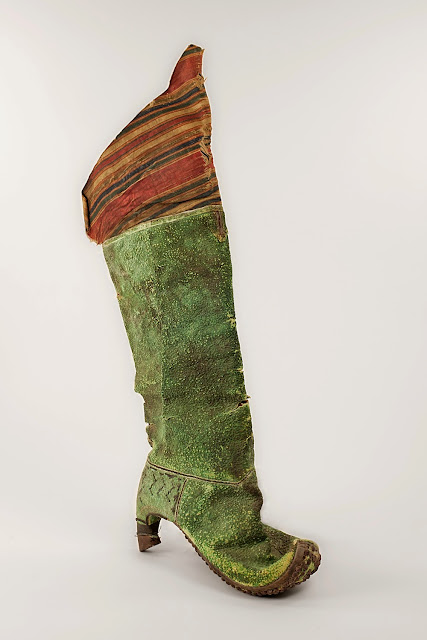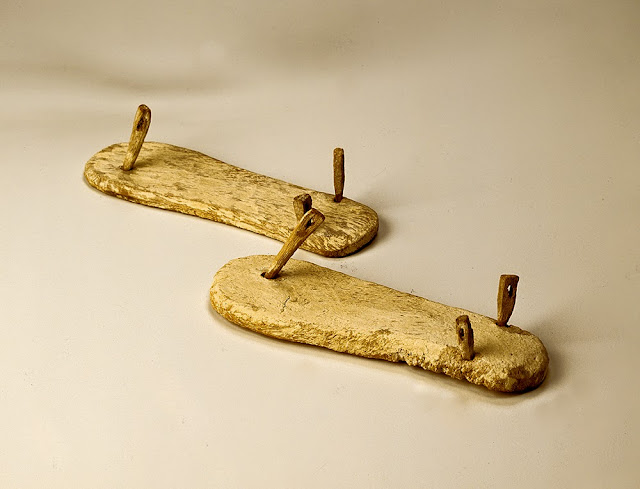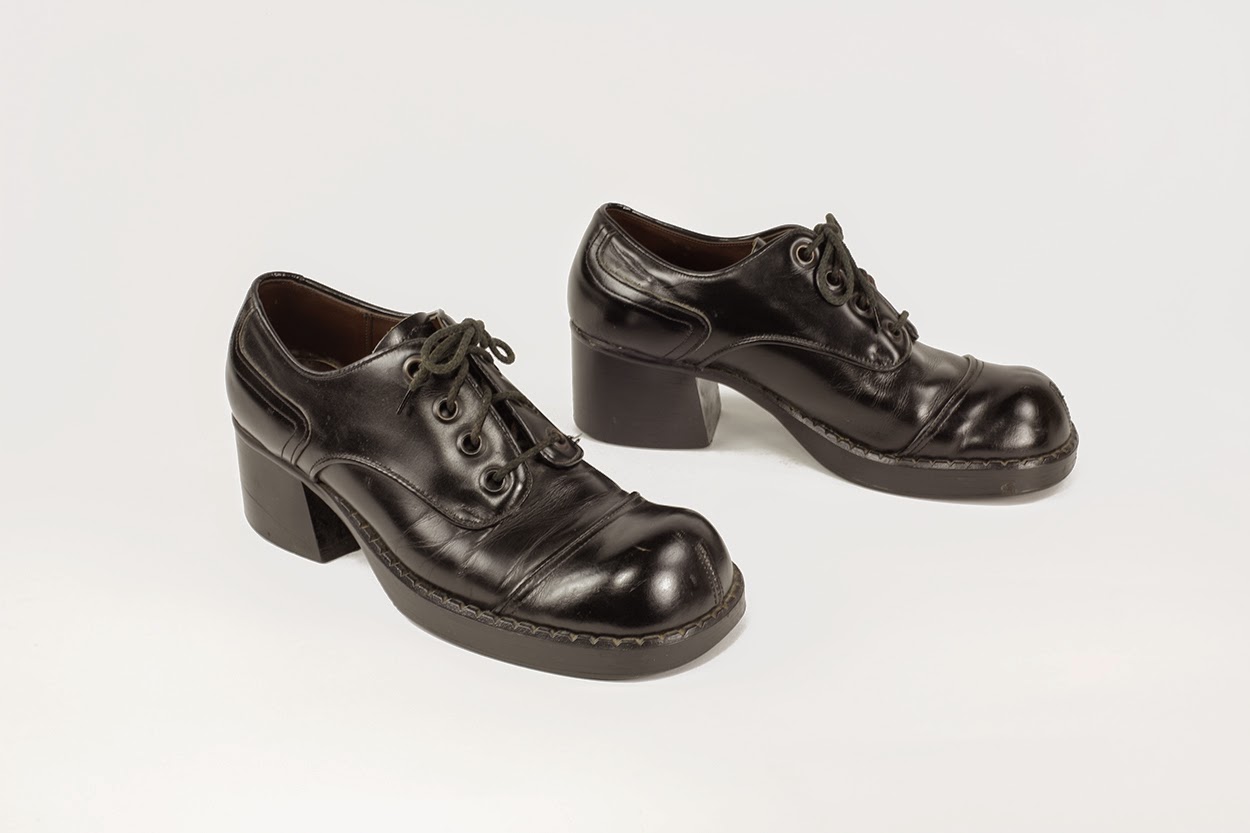By: Jessica Pollock, Communications Intern
I recently sat down with Ada Hopkins, conservator at the Bata Shoe Museum, to learn more about her role at the museum and conservation at large.

1. What initially led you to be interested in conservation?
I was always interested in art history and archaeology. When looking at different academic programs, I liked the marriage of history, technology and chemistry in the field of conservation. As such, I decided to go to Algonquin College in Ottawa, which used to have a great conservation program.
>2. How long have you been working at BSM as a conservator?
I’ve been working at the museum for 32 years! I started when the collection was still stored at the Bata headquarters near the Ontario Science Centre (which is now where the Aga Khan Museum is).
3.What technical training is required to be a conservator?
One has to go to school to study conservation. Most programs have mandatory internships that have to be completed during the school year or after one’s coursework is completed.
4.How does your role intersect with curators’ work?
Curators choose the objects that will effectively tell a story. Once the objects are selected, we will review them together and discuss their condition, what needs conservation and which require special display mounts. We also estimate how long the overall process will take in order to determine a work schedule that ensures everything will be ready for the installation of the exhibition.
5. What are some of the practices you employ to conserve the shoes in the collection?
The treatment always depends on what materials each shoe is made of. I just finished working on a pair of hiking boots worn by Group of Seven painter – Lawren Harris – because they are going into an exhibition. There are tiny paint splatters on the leather from when he was sketching outdoors that should never be removed. It is important to take any markings into consideration that may be integral to the wearer. Another example is a pair of tennis shoes worn by professional tennis player, John McEnroe. He used to cut the side of his tennis shoes to relieve the pressure on his toes while he was playing. I would never repair the tears as they are part of the wearer’s story.
6. Are there specific pieces of technology or instruments you need for your work?
You definitely need a microscope to examine artefacts up close to determine their condition and what materials they are made of. If there is detailed analysis needed, the museum has contacts that have access to scientific equipment necessary for further examination.
7. What is the primary challenge you face when trying to conserve new artifacts that come in?
Well, every shoe is different. Sometimes they have been worn and sometimes they have not. Sometimes they have been kept in terrible conditions, while others have been taken care of. I really look at each pair to establish what immediate treatment is needed, if at all.
Are there certain artefacts that come in that are in conditions beyond the help of conservation?
 |
| 17th century Persian boot |
Yes. We have a single Persian boot from the late 17th century, which is unique to our collection. The museum acquired it because of its rarity and then had testing done on the leather, only to find that it was quite degraded. It had been squashed flat in storage, and its condition makes it impossible to be returned to its original shape. Nevertheless, it is a fine research example. If we choose to put it on display, it will have to be kept in a special climate controlled showcase.
9. Are there any ethical issues that you face in your work?
When you are dealing with material culture from diverse cultures around the world, one really has to be respectful and cognizant of their origin and symbolism.
10. What is the oldest shoe in the collection and how do you go about making sure it stays in optimal condition?
The oldest pair of shoes in our collection is of Egyptian origin and roughly 4500 years old. We were fortunate that it came to the museum in excellent condition. However, we ensure that when they are on display, we control the temperature and light levels surrounding them. We are definitely extra careful around a pair of shoes thousands of years old and as rare as these ones.
 |
| 4500 year old Egyptian sandals |
11. Would you argue that conservation is more of an art or science? Both?
I think it is certainly both.
12. What is your favourite artefact in the collection?
I really love the story behind Mikhail Baryshnikov’s leather derby shoes. They were the pair that he wore the day he defected from Russia, while on tour in Toronto in 1974. I also admire a pair of Indian padukas because they are technically very interesting. When filled with rose water, an internal pump, activated by the heel button, sprayed water on the wearer’s foot with each step.
 |
|
Mikhail Baryshnikov’s shoes
|
 |
| Wooden paduka |
13. Do you have any advice for aspiring conservators?
There are many conservation programs – several in Canada, many in Europe and a few in the United States. Some specialize in certain kinds of artifacts, so it is best to decide what you would like to specialize in – painting, modern materials, textiles etc. This will help you determine what program is best suited for your interests.
14. What is the number one reason why people should come visit the BSM?
People are very familiar with shoes, since we all wear them every day! However, the museum provides our visitors an interesting lens into material culture with which to access social history.





